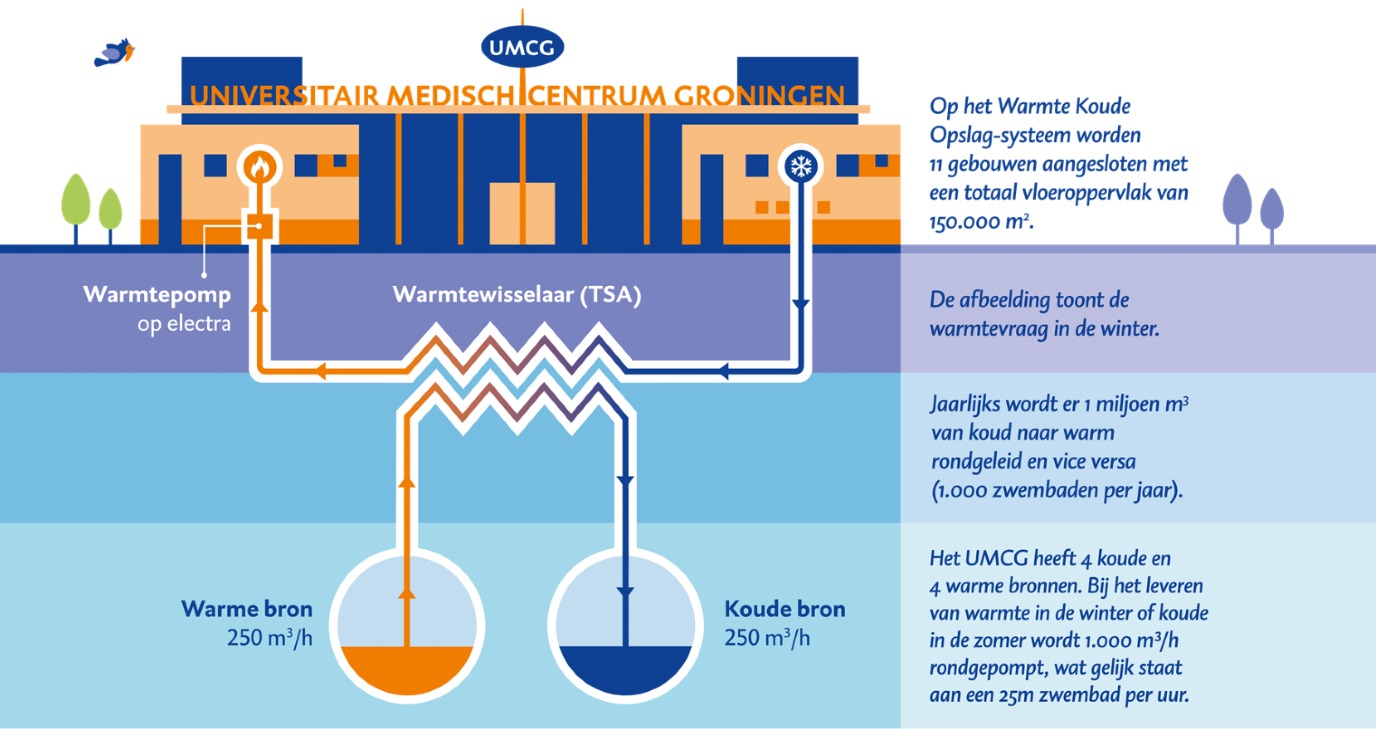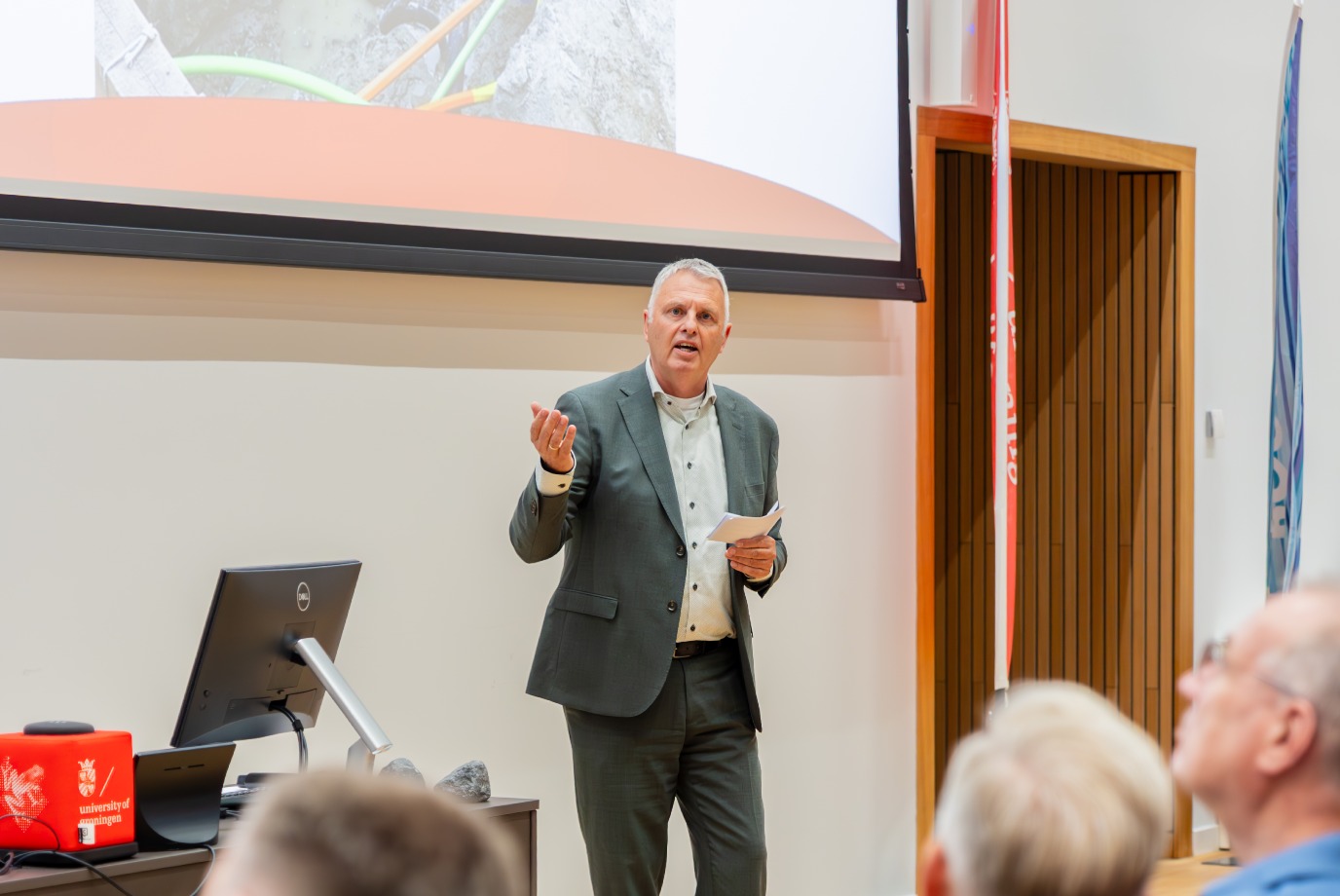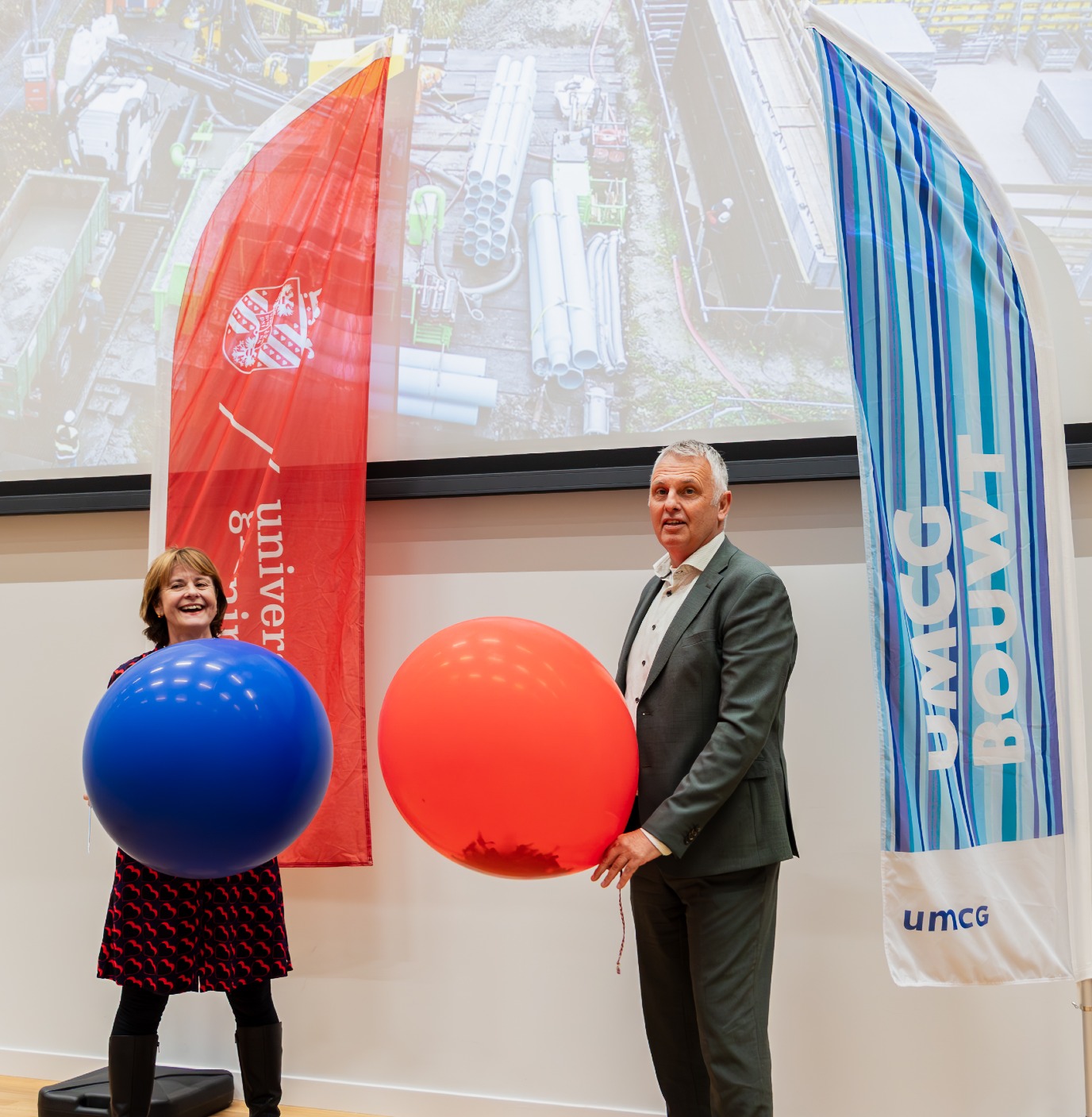A sustainable step: Anda Kerkhoven Centre connected to ground-coupled heat exchanger
Over the past few months, the UMCG and the University of Groningen (UG) have installed a ground-coupled heat exchanger on the Healthy Ageing Campus site. A ground-coupled heat exchanger uses the heat in summer and the cold in winter to heat and cool the buildings of the UMCG and the UG. This is done using groundwater, which is stored warm in summer and cold in winter. Together with a heat pump, this provides a smart and economical way of heating and cooling without using natural gas.

How does a ground-coupled heat exchanger work?
The ground-coupled heat exchanger of the UMCG and the UG at the North Point of the Healthy Ageing Campus uses eight wells in the ground: four warm and four cold. This makes this ground-coupled heat exchanger one of the largest in the Netherlands. Groundwater is pumped up from these wells and pumped back down again via pipes. Each well can move 250 cubic metres of water per hour. Together, the four cold wells can therefore move as much water as one swimming pool per hour.
Over the course of a year, around one million cubic metres of water passes through the system – that is equivalent to 1,000 swimming pools. The heat or cold from the groundwater is transferred to the buildings via a heat pump for heating or cooling.
In the coming years, the UMCG and the UG want to connect eleven buildings (both existing and new) to this system. This will save around 1.2 million cubic metres of natural gas each year – the same amount that 1,000 households normally use.

Towards energy neutrality
With the construction of this ground-coupled heat exchanger, the UMCG and the UG are taking an important and sustainable step towards becoming energy neutral. A ground-coupled heat exchanger is a sustainable technology because it uses renewable energy sources. No fossil fuels are used to heat and cool our buildings. This allows us to reduce our CO2 emissions and opt for a more sustainable way of using energy.
The ground-coupled heat exchanger was constructed by three contractors from the north of the Netherlands. Remborg Bodemenergie was responsible for the construction and for drilling the various wells. Antea Group installed the horizontal piping and CroonWolter&Dros was responsible for the installation technology.
On Wednesday 24 September 2025, the Anda Kerkhoven Centre was the first to be connected, and this was commemorated.

More news
-
15 September 2025
Successful visit to the UG by Rector of Institut Teknologi Bandung

